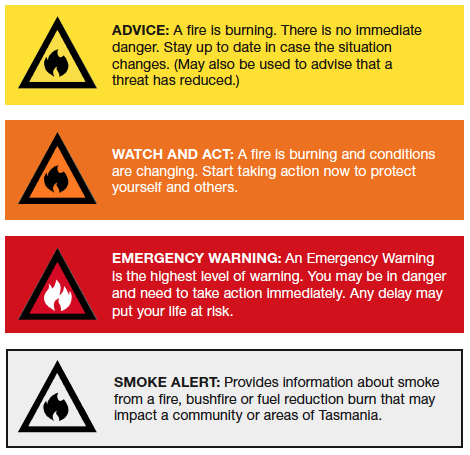Flood Alerts And Warnings: A Comprehensive Guide To Safety

Table of Contents
Understanding the Difference: Alerts vs. Warnings
Knowing the difference between flood alerts, watches, and warnings is paramount. Misunderstanding these terms can have life-threatening consequences. These terms represent escalating levels of flood risk:
-
Flood Watch: A flood watch means that conditions are favorable for flooding. While flooding isn't imminent, it's a possibility. This is the time to begin preparing your family and property. Monitor weather reports closely and review your flood preparedness plan. This is also a good time to check your sump pump, if you have one.
-
Flood Advisory: A flood advisory indicates that flooding is occurring or is imminent in specific areas. While the threat is more immediate than a watch, the flooding may be relatively minor. Stay alert, monitor the situation, and be ready to take action if the situation worsens. This is especially relevant to areas prone to flash flooding or those located near rivers and streams.
-
Flood Warning: A flood warning signifies that flooding is occurring or is expected to occur imminently. This is the most serious alert level. Immediate action is required. Evacuate if instructed to do so by authorities. This is not the time to hesitate; your life and the lives of your loved ones are at risk. Knowing the difference between these levels of warning is essential for effective flood preparedness and response.
Sources of Flood Alerts and Warnings
Staying informed is crucial. Multiple reliable sources provide flood alerts and warnings:
-
National Weather Service (NWS) websites and apps: The NWS is the primary source for weather information, including flood alerts and warnings. Their website and mobile apps provide real-time updates, forecasts, and detailed information about flood risks in your area. Sign up for alerts specific to your location.
-
Local news channels and weather broadcasts: Local news channels often provide timely updates on flood situations, including specific areas affected and evacuation orders. They often have reporters on the ground, providing valuable insights.
-
Emergency alert systems (e.g., Wireless Emergency Alerts - WEA): Your mobile phone can receive emergency alerts, including flood warnings, directly from the NWS. Ensure that this feature is enabled on your phone.
-
Community warning systems (siren systems, local government websites): Many communities have siren systems to warn residents of impending floods. Local government websites also provide critical information, evacuation routes, and shelter locations.
-
Neighboring communities' warnings: Floodwaters can spread rapidly. Staying aware of flood situations in neighboring communities can provide crucial early warning, even if your immediate area isn't yet under a warning.
Creating a Personal Flood Preparedness Plan
Proactive preparedness is key to surviving a flood. A well-defined plan is essential:
-
Develop an evacuation plan, including designated meeting points: Identify multiple escape routes and designate a safe meeting place outside the flood zone. Practice your plan with family members.
-
Identify potential flood risks in your area and create escape routes: Know the areas in your home most vulnerable to flooding and plan how you'll get out quickly.
-
Prepare a flood emergency kit: Stock a kit with essential supplies such as water, non-perishable food, a first-aid kit, medications, important documents (stored in waterproof bags), flashlights, and extra batteries.
-
Elevate valuable possessions: Move important items to higher ground to protect them from floodwaters.
-
Learn about your community's flood response plan: Understand your local emergency response procedures and know where to find shelters.
-
Consider flood insurance: Flood insurance can provide crucial financial assistance following a flood.
Staying Safe During a Flood
During a flood, safety is paramount:
-
Evacuate immediately if instructed to do so: Never attempt to drive or walk through floodwaters. The depth and current can be deceivingly dangerous.
-
Turn off utilities (electricity, gas): This prevents electrical shocks and potential gas leaks.
-
Move to higher ground: Seek refuge on higher ground away from flood-prone areas.
-
Avoid floodwaters: Floodwaters are often contaminated with sewage and debris, posing significant health risks.
-
Stay informed about changing conditions: Continue to monitor weather reports and official updates.
-
Seek emergency help if needed: Call emergency services if you require assistance.
Post-Flood Safety and Recovery
After the floodwaters recede, recovery begins:
-
Check for structural damage and safety hazards: Inspect your home for structural damage, gas leaks, and electrical hazards before entering.
-
Avoid contaminated water and use caution when entering your home: Floodwaters can contain dangerous contaminants. Wear protective gear and use caution.
-
Report damages to insurance companies and relevant authorities: File insurance claims and notify local authorities of damages.
-
Dispose of contaminated items properly: Dispose of damaged items according to local guidelines.
-
Seek professional help for cleaning and restoration: Professional services can help clean and restore your property safely and efficiently.
-
Be aware of potential health risks (mold, bacteria): Be vigilant about potential health risks associated with flood damage, such as mold and bacteria.
Conclusion
Understanding and responding effectively to flood alerts and warnings is vital for protecting your life and property. Knowing the differences between watches, advisories, and warnings, having a comprehensive flood preparedness plan, and staying informed through reliable sources are crucial steps. Remember your evacuation plan and the importance of immediate action when a flood warning is issued. Don't wait until it's too late! Develop your flood preparedness plan today, and stay informed about local flood alerts and warnings to protect your family and property. Your safety depends on it.

Featured Posts
-
 How Nicki Chapman Made 700 000 From A Country Home Investment
May 25, 2025
How Nicki Chapman Made 700 000 From A Country Home Investment
May 25, 2025 -
 Dc Love Story A Journey A Tragedy
May 25, 2025
Dc Love Story A Journey A Tragedy
May 25, 2025 -
 Ardisson Raconte Soirees Endiablees Et Confessions Intimes
May 25, 2025
Ardisson Raconte Soirees Endiablees Et Confessions Intimes
May 25, 2025 -
 Rome Open Zheng Through To Last 16 After Frech Win
May 25, 2025
Rome Open Zheng Through To Last 16 After Frech Win
May 25, 2025 -
 Joe Bidens Post Presidency The Week That Changed Everything
May 25, 2025
Joe Bidens Post Presidency The Week That Changed Everything
May 25, 2025
